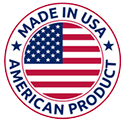Hemp plastic is…a pathway to a brighter future. A near-term solution to significantly reducing your carbon footprint and plastic pollution. A win for both your customers and future generations.
All that is true, but if you’re still wondering what exactly is hemp plastic, this is the blog for you. You’ll find a rundown of our proprietary process, learn about some of our primary materials and discover how hemp plastic is being used to reduce greenhouse gas emissions and overall plastic consumption.

What is Hemp Plastic?
Before discussing our materials, let’s take a step back and look at synthetic plastics, which make up the vast majority of plastics in use today. We often refer to these plastics as fossil fuel-based because their raw materials are typically crude oil or natural gas. After the raw materials are extracted, they go through a refining process. For example, crude oil is turned into different petroleum products. The oil is heated in a furnace before being separated into lighter components in a distillation unit.
Next comes the complex process of polymerization, which is when light gasses are converted into hydrocarbons called polymers. Polymers, to put it simply, are chains of light gasses like ethylene, butylene or propylene. They may be blended with additives to create plastics.
Our hemp biocomposites are made from a proprietary process which includes compounding a range of hemp materials with strand-building polymers and additives. Together, these are joined into a compound material to make a durable, attractive biocomposite that is far greener than fossil fuel-based resin.
Depending on the needs of our customers, our materials may be created using both 100% bio-based polymers or raw fossil fuel-based bonding strands. These polymer bonds encapsulate hemp particles to create the desired properties, and the end result is a cohesive, consistent material in the form of a bioplastic or biocomposite pellet.
These pellets are used in injection molding and other techniques to create everything from durable consumer goods and furnishings to automotive and architectural components, packaging, clean tech and other products.

What Parts of the Hemp Plant are Used?
We can use multiple parts of the hemp plant and a range of post-extraction material or stalk materials. Our ability to use many parts and tap into the waste stream of the growing industrial, nutritional and medicinal hemp processing industries means we have ample supply and at a reasonable price.

What are the Benefits of Hemp Plastic?
Reduction in Fossil Fuel-Based Plastic: Hemp plastic immediately and significantly reduces plastic use. Our customers can achieve a 25% to 100% reduction in plastic use by switching to our more sustainable hemp plastics. This is extremely significant and immediately beneficial to the environment.
Carbon Sequestration: Hemp is a carbon-negative renewable resource. That means it actually consumes far more greenhouse gasses than are emitted in its production. Just one ton of hemp can absorb up to 1.6 tons of CO2, making it one of the best carbon sequestration options on the planet. Add this to the fact that our biocomposites replace carbon-emitting fossil fuel plastics with carbon-sequestering hemp, and you have a very significant carbon win-win.
Good for the Land: In addition to being a “carbon negative” crop, hemp prevents soil erosion, can be cultivated over and over again on the same land and can even reduce water pollution.
Easy Transition: Our materials have similar properties to traditional plastics, making transitioning easier. They can replace conventional plastics without significant additional capital or operating expense. It’s sustainability, simplified!

What Hemp Plastic Options Currently Exist?
We currently make four primary plastics that are designed as replacements for fossil fuel-based resin:
- HempPropylene
- HempEthylene
- HempPLA
- HempABS
While this is our core stable of products, we are experts at making hemp/polymer blends and have made many different hemp plastics, including for extrudable and injection mold applications.
Explore our materials and learn more about custom compounding here. If you’re ready to join the hemp plastic revolution, contact us today at [email protected] to learn how we can help you make the greener choice.

